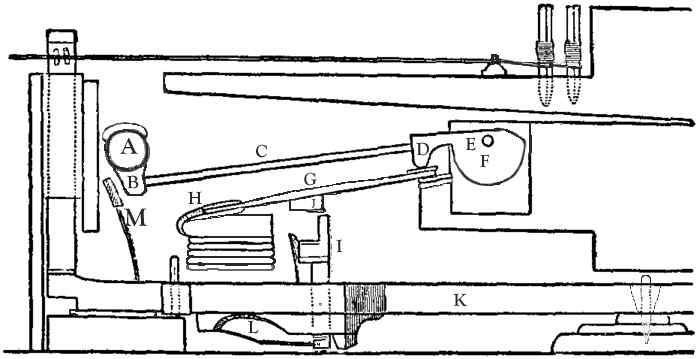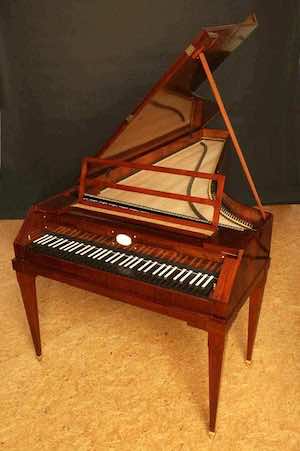Top > Instruments > Fortepiano
This site introduces unknown composer Emanuel Bach (C. P. E. Bach). This English version was translated from Japanese one by ChatGPT.
Fortepiano
The Fortepiano is a keyboard instrument used from the late 18th century to the early 19th century and is considered the predecessor of the modern piano. As its name suggests—“forte” (loud) and “piano” (soft)—its distinguishing feature is the ability to express dynamic contrasts. Its tone and construction differ from the modern piano, making it highly valued for performing Classical-era music.
Structure and Mechanism
1. Hammer Action
In the fortepiano, pressing a key causes a hammer to strike the string, producing sound. This mechanism allows for variations in volume and tone depending on the force of the keystroke.
2. Timbre and Volume
The fortepiano is known for its light and transparent tone, with a softer volume compared to modern pianos. This quality highlights the delicate expressions of Classical music.
3. Types of Pedals
Instead of a foot pedal, the fortepiano commonly used a “knee lever” operated by the playerʼs knees to sustain notes and create resonance effects.

Cristoforiʼs Hammer Action Mechanism, from Wikipedia

Historical Background
1. Invention in the Early 18th Century
Around 1700, Italian instrument maker Bartolomeo Cristofori invented the prototype of the fortepiano. [Note: There are reports of earlier keyboard instruments with hammers.]
2. Spread in the Late 18th Century
Classical composers such as Haydn, Mozart, and Beethoven favored the fortepiano. Their piano sonatas and concertos were composed to take advantage of its unique characteristics.
3. Evolution in the 19th Century
In the 19th century, the fortepiano underwent structural improvements, leading to greater volume and eventually evolving into the modern piano. Innovations like the iron frame and cross-stringing caused the fortepiano to fall out of mainstream use.
The Modern Fortepiano
The fortepiano has been reevaluated as an important instrument in the field of historically informed performance. Musicians dedicated to authentic performance practices use it to recreate the sounds of Mozart and Beethoven as they were originally heard.
Significance and Appeal
The fortepiano holds special value as an instrument capable of faithfully expressing the nuances of Classical music. Its delicate timbre and rich dynamics offer a unique charm not found in modern pianos. Historically, the fortepiano represents a crucial stage in the evolution of keyboard instruments.
The pianos of the 18th century were diverse, with multiple origins beyond Cristofori’s invention. Around 1697, Pantaleon Hebenstreit developed the “Pantaleon,” which featured both gut and metal strings and lacked dampers, allowing for a free resonance. This instrument influenced the development of early pianos, leading to new keyboard instruments with hammer actions. Early pianos were equipped with devices like moderators and lute stops, allowing for a variety of tone adjustments. In 18th-century piano performance, it was common to play with the dampers lifted, giving the sound more power and brilliance.